Winter is a great time to practice your tracking skills. How well do you know your Montana wildlife? Brush up on your knowledge here, and then take an amble in the snow for a real-life test!
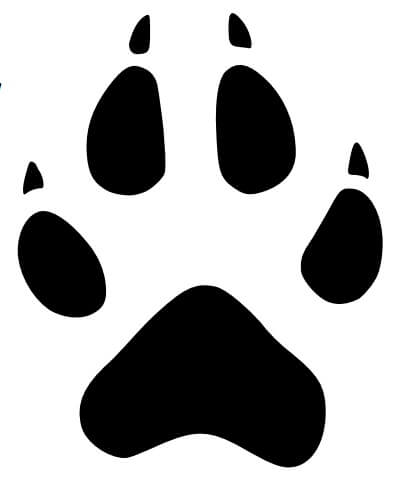 Coyote
Coyote
Canis latrans
Tracks have four toes, with inside toes a little larger. Claw marks usually show. Bottom pad is roughly triangular. You can draw a rough “X” through the center of canid tracks, between the two outer toes on each side to between the pad and outer toe on the opposite side.
~2.5-3” long by ~2-2.5” wide.
(Wolf tracks are larger – 5” by 4”, and fox tracks smaller – 2” by 1.8”.)
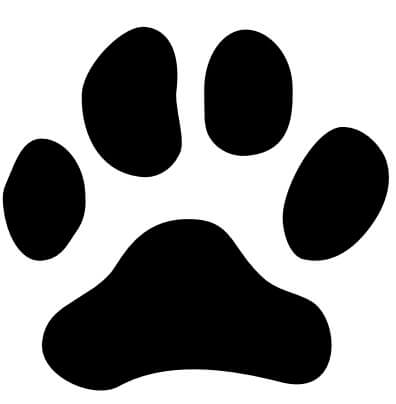 Mountain lion
Mountain lion
Puma concolor
Four toes, usually no claws showing. Bottom pad is wide and trapezoidal, with three lobes on bottom and two on top, and makes up nearly half the print.
Tracks are as wide or wider as they are long, about the diameter of a baseball (3.5” by 3.6”).
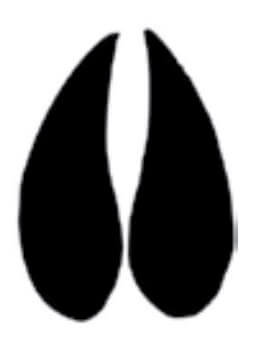 White-tailed or mule deer
White-tailed or mule deer
Odocoileus spp.
Tracks are heart-shaped, and look a little like an open mussel shell, with their curved edges and slender, pointed tips. Dewclaws may show (about an inch behind the main print) in deep snow.
~3” long by ~2” wide.
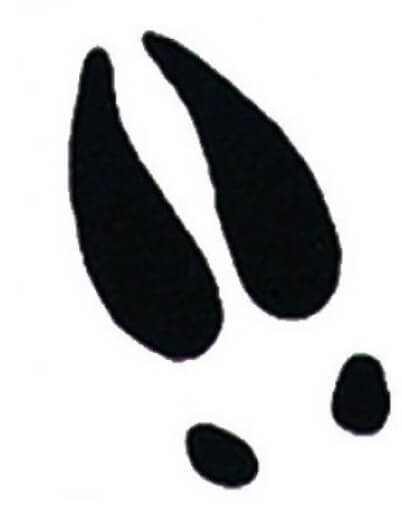 Moose
Moose
Alces alces
Tracks similar to deer, but much larger, ~6” long by ~3.5” wide. Stride (distance between prints of the same hoof) is much longer than that of deer—70” to a deer’s 30-36”. Moose may drag their feet in deep snow, leaving long, parallel troughs.
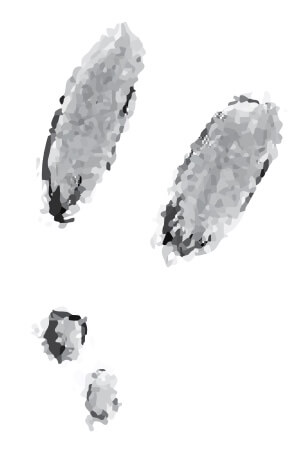 Snowshoe hare
Snowshoe hare
Lepus americanus
Hind feet are long and wide to help hares “float” on the snow. Front prints are small and circular, about half the size of hind prints. Hind prints are parallel, and land ahead of the diagonal front prints.
~2” long by 1.5” wide (front);
4-5” long by 3.5-4.5” wide (hind).
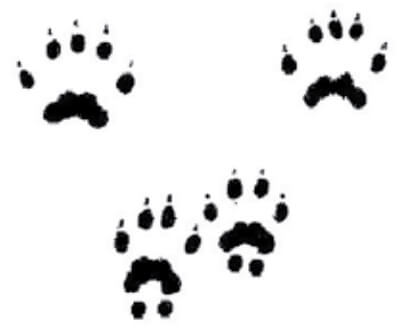 Red squirrel
Red squirrel
Tamiasciurus hudsonicus
Front prints are the size of a quarter, with four toes; hind prints are longer and five-toed. Short claws. The hind feet land ahead of the front feet in a squarish shape, with front feet a little closer together.
1” by 1” (front), ~2” long by ~1” wide (hind).
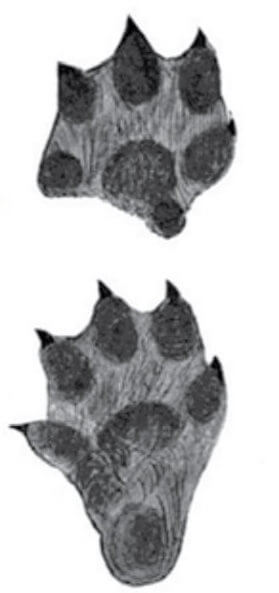 River otter
River otter
Lutra canadensis
Each foot has five clawed toes; hind prints are wide and about twice the size of front prints. All feet have webbed toes, and hind prints look a little like our hands might look if they were webbed. Look for tail drag tracks as well—and, even more fun, the 9”-wide troughs otters make when sliding down a snowy hill into the water!
~3.5” long by ~2.5” wide (front),
4-5” long by 3.5” wide (hind).
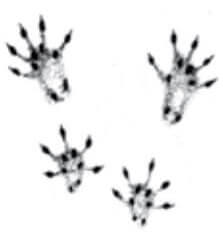 Shrew
Shrew
Soricidae family
Tiny! Five little clawed toes on each foot, with a grouping of small pads below. Track pattern is similar to squirrel, with the larger hind feet landing ahead of front feet; can look U-shaped in deep snow. Hind prints are parallel, front prints often slightly diagonal.
.25” x .2” (front), .4” x .4” (hind).
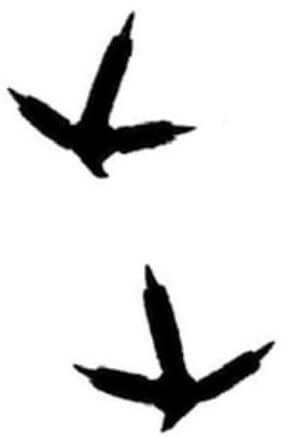 Grouse
Grouse
Dendragapus spp.
Four toes, three pointing forward and one pointing back. Back toe is shorter and may not show, making the track look a little like an anchor or an arrow. Toes are fairly wide, and feet may point slightly inward.
~2.5” long by ~2” wide.
RECOMMENDED READING
(all available at the Montana Natural History Center library):
Scat and Tracks of the Rocky Mountains by James C. Halfpenny
Field Guide to Tracking Animals in Snow by Louise R. Forrest
Tracking and the Art of Seeing: How to Read Animal Tracks and Sign by Paul Rezendes
Mammals of Montana by Kerry Foresman
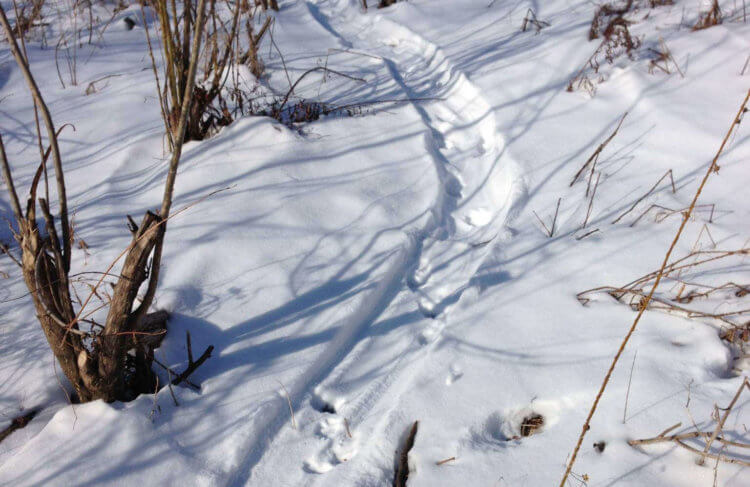
Tracks from an otter sliding downhill (photo courtesy USFWS).
This article was originally published in the Winter 2016-2017 issue of Montana Naturalist magazine, and may not be reproduced in part or in whole without the written consent of the Montana Natural History Center. ©2016 The Montana Natural History Center.
Click here to read more articles from Montana Naturalist magazine.
Want to learn more about our programs? Sign up for our e-newsletter! You can also become a member and get discounts on our programs as well as free reciprocal admission to 300+ science centers in North America!












